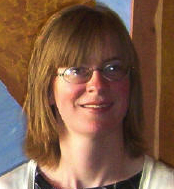
Arctic Ice
by Betsy Mars
Below the shimmering outline of the heat-struck mountain
I spy a trailer truck plastered with scenes of snow-capped peaks
delivering ice to the thirsty non-natives maladapted for the weather.
The desert crawls with realtors feeding
the demand for inexpensive land.
In this new old world order we seek heat
and shelter from winter’s vicissitudes,
drink in the cool dawn, dip in the pool at midday,
sip cocktails at sunset, still water the lawn.
At night we sit in the vast darkness and marvel at the stars.
Earthbound and blind, in search of water we travel to Mars.
PHOTO: Arctic Ice (Twentynine Palms, California) by Betsy Mars.
NOTE FROM THE AUTHOR: I wrote this (and took this photo) during a brief (one full day) retreat in a motel in Twentynine Palms, California. I had been struggling with a way to approach this topic which is so important to me without ranting or being overly pessimistic. My nature is to find hope, though I have been more and more fearful as I have observed all of the severe weather events that seem to be increasing in frequency this past few years. It is difficult for me to understand how others are not feeling the same urgency to address this as I do, though I admit to not wanting to give up some of the habits I have that contribute to climate change. I am hoping that as a global community we find a way to align and ease the way for everyone to make the necessary changes to avoid more devastation. It is compulsory.

ABOUT THE AUTHOR: Betsy Mars is a tree-hugging, bleeding-heart poet and photographer who seems to have always had a soft spot for the environment and all creatures, great and small. From childhood she gravitated to water and to green environments, but she has lately found herself also appreciating the resilience and adaptations of those living in the desert – maybe a natural evolution as she ages and adapts. As the mother of two adult children, she is especially concerned with the future of the planet. Her work has appeared in One Art, Sheila-Na-Gig, Sky Island, Verse Virtual, and many other fine publications. She is the author of the poetry collection Alinea and co-author, with Alan Walowitz, of In the Muddle of the Night. For more, visit her at marsmyst.wordpress.com and find her on Facebook.



















